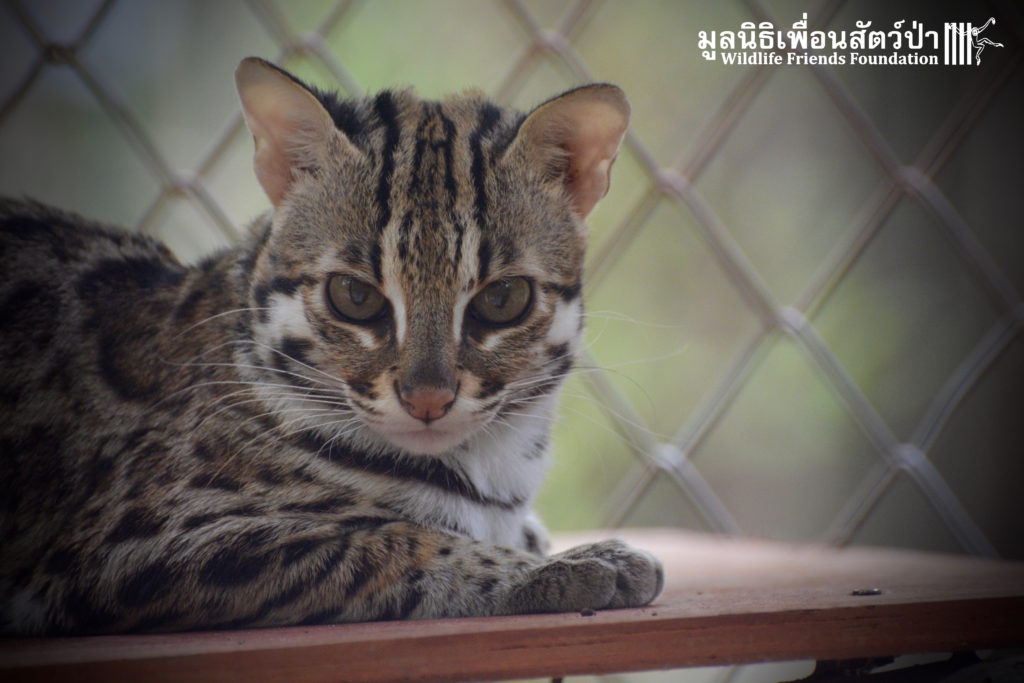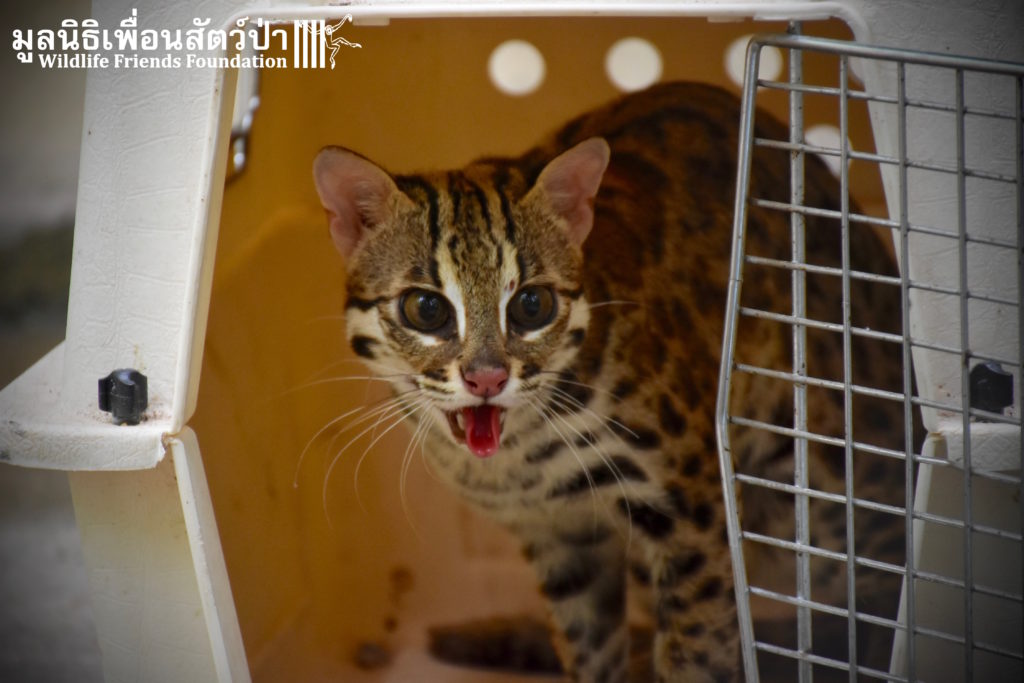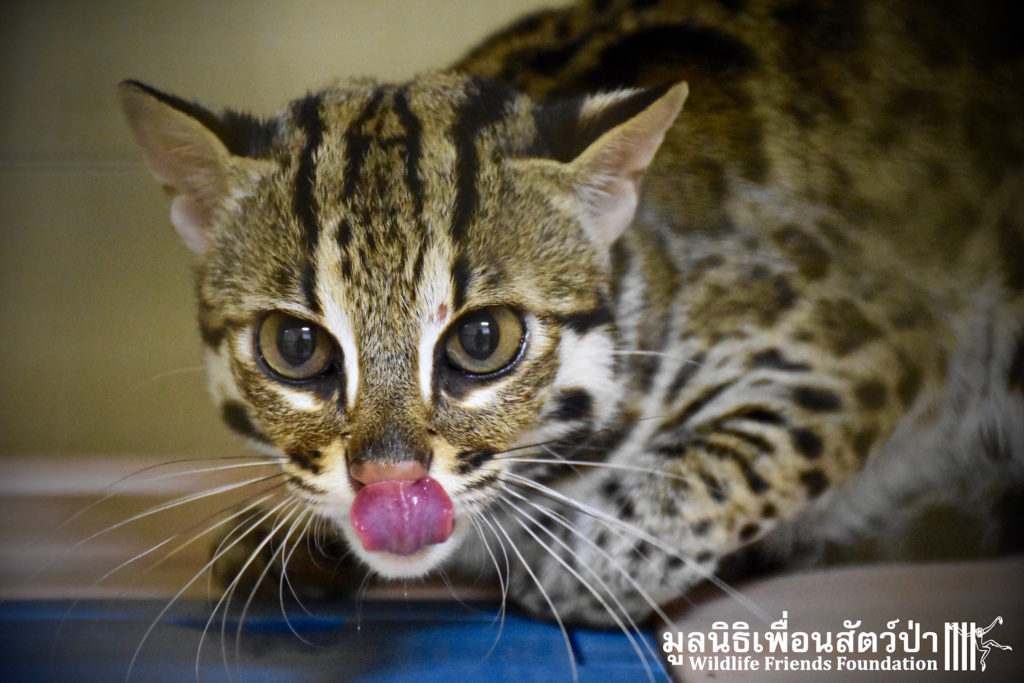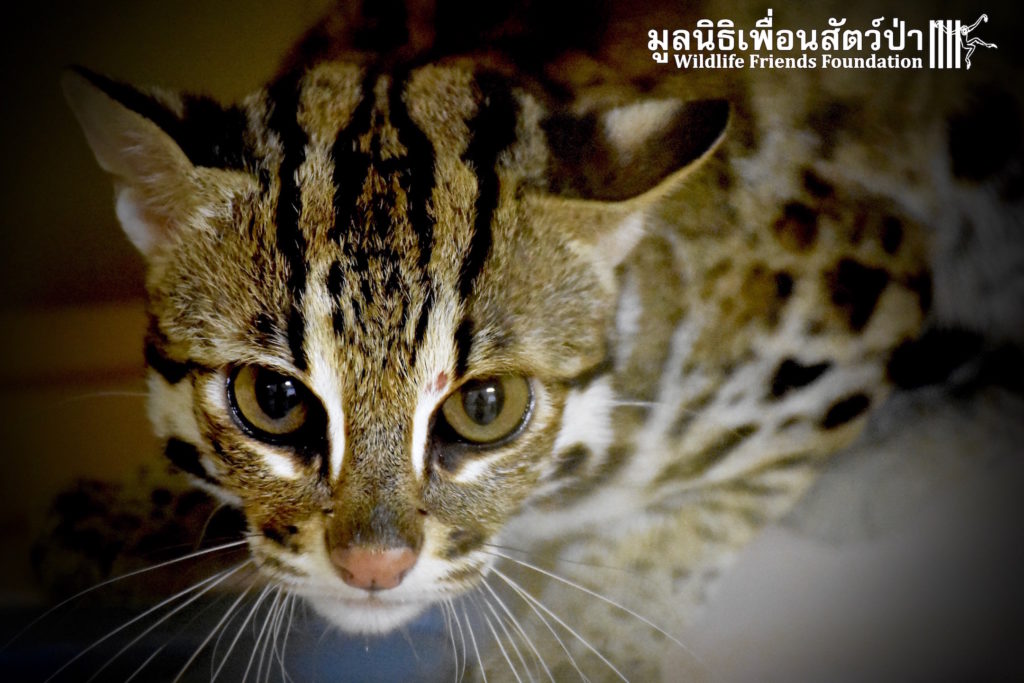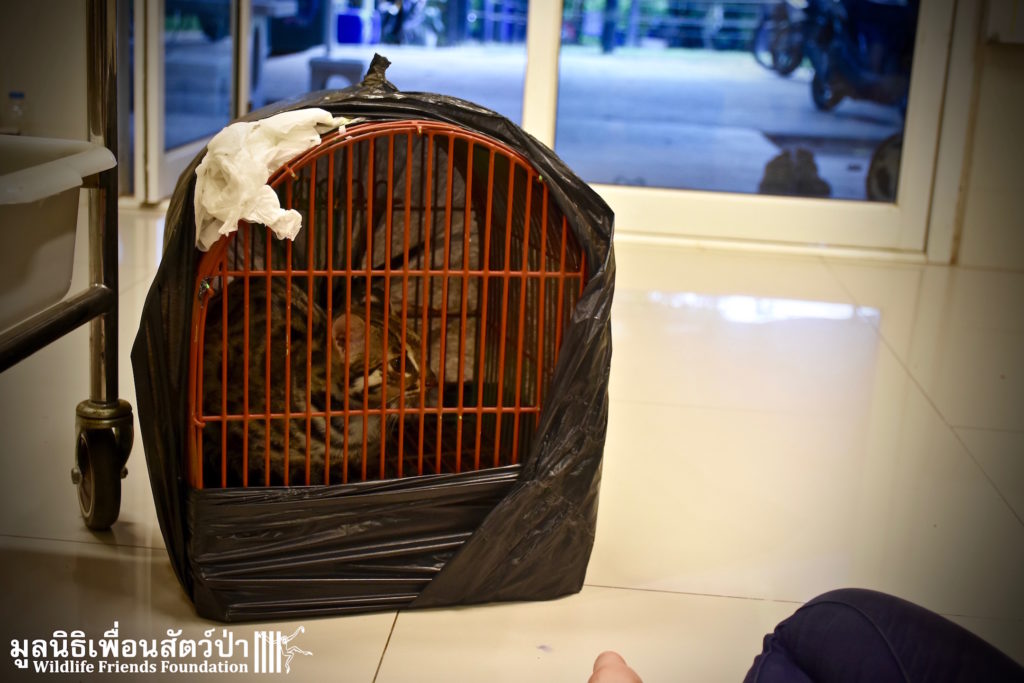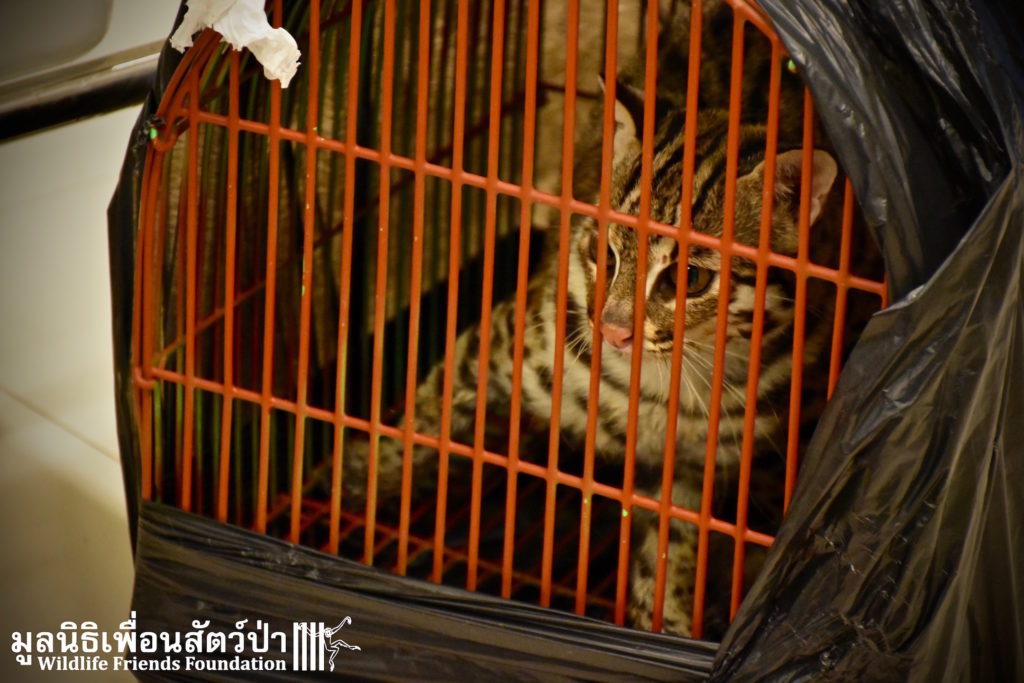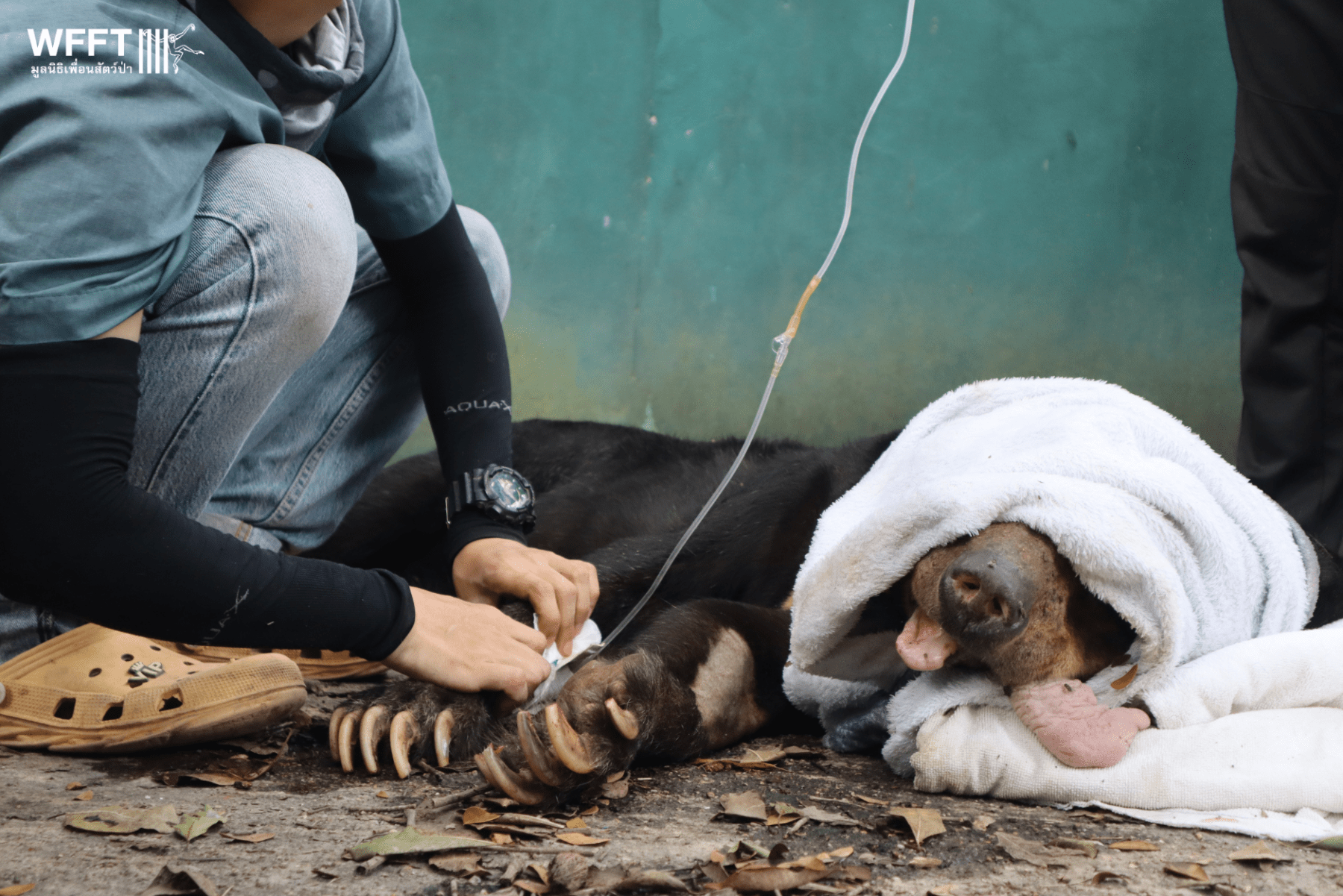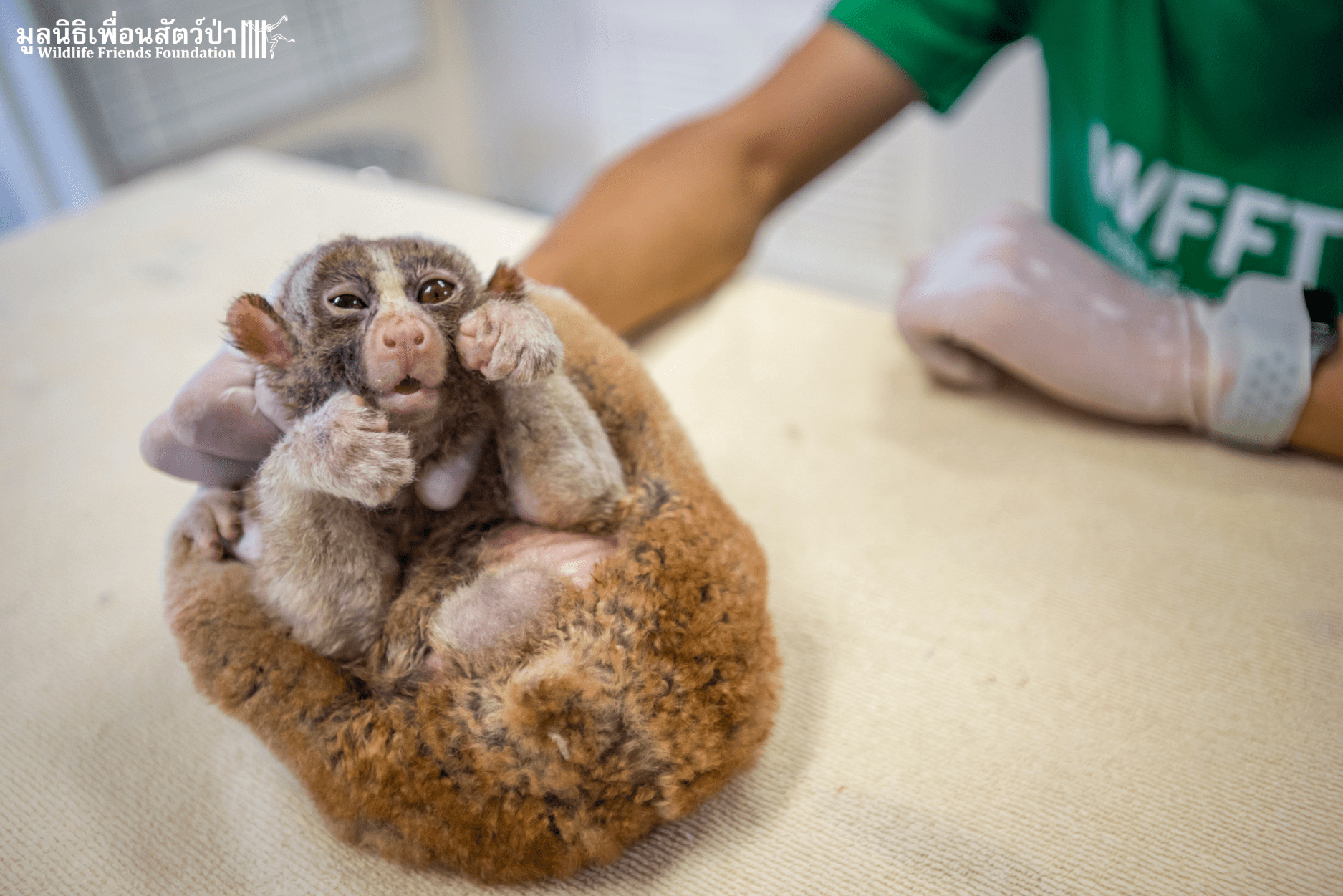A few days ago, Cola was sedated for her 6-monthly vet treatment, during which our team did a routine health check.
Another Unwanted Pet Leopard Cat – Two in a Week
‘Leonardo’ the leopard cat (Prionailurus bengalensis) arrived at the WFFT Rescue Centre a few days ago after his current ‘owner’ decided she was unable to care for him. He had been kept as a pet for most of his short 3-year life, and had many owners during this time. As he got older he became more aggressive, and his owner could no longer handle or play with him. He was then left in a cage in her garden until she contacted us for help. It is likely that this little guy was illegally poached from the wild and illegally sold as a pet.
The IUCN Red List of Threatened Species lists this species as Least Concern (LC). Leopard Cat skins are commercially traded internationally for the fur trade, primarily coats. Skins are also used as decorations in some parts of its range. Leopard Cats are occasionally kept as pets, sometimes taken from the wild and sometimes from captive breeding and they have been interbred with domestic cats, particularly in the West, to make the popular Bengal breed. Their bones are used in some traditional Asian medicines. Leopard Cat populations in Bangladesh, India and Thailand are listed on CITES Appendix I, and all other populations are listed on Appendix II. Although commercial trade is now much reduced this species continues to be hunted throughout most of its range for fur, for food and as pets. They are also widely viewed as poultry pests and killed in retribution.
Leonardo is settling in to life at WFFT after his stressful first few years of life. We will provide him with a permanent refuge, and if possible we will rehabilitate him and release him back to wild. Keep Wildlife Wild and Not as Pets!!!

